Hello! This is Everything Is Amazing, a newsletter about curiosity.
I was initially reluctant to use the word “Amazing” because I’m British and we don’t go in for those kinds of reckless, unseemly displays of emotion. A friend even suggested the title Everything Is Awesome! We haven’t spoken since.
But here’s a warning for my British readers: today, I will be using the word “awesome” a lot. Not in that modern overused sense that gets applied to everything (“wow, this slice of slightly damp burnt toast is awesome!!!!!!”) but in the dictionary-correct sense.
Let’s talk about awe.
In May of last year, the Modesto Bee (Stanislaus County, California) ran an obituary of a much-loved local resident, Mr. P. Vasquez. After a few years of ill health, he’d recently been showing symptoms of pneumonia and was admitted to hospital, where he passed a few days later.
Another obituary noted his love of the mountains, his fondness for helping people (including the local Miwok, whose traditions are currently under threat) and that he was “survived by his two children.”
Mr Vasquez lived a low-key but colourful life: born in East Los Angeles, he worked in a lot of trades (including firefighting, truck-driving and working security), and eventually bought a plot of land around 10 miles from Yosemite, which he turned into a farm. He got married, he got divorced, he grew his own food - and he went for a lot of walks on the hills above Yosemite Valley…
OK. I’m working really hard here to hold his true identity back from you, including the nickname you probably already know him by. I’ll be shocked if you haven’t experienced a moment of pure joy (and hilarity) through his most famous piece of work.
That second obituary, by the way? It was in the New Yorker.
For the sheer joy of reliving it, let’s pretend you don’t know the following story. One day in early January 2010, Paul Vasquez stepped out of his house and into his back yard, and saw…
“Woah, that’s a full rainbow, all the way. A double rainbow - oh my god! It’s a double rainbow, all the way. Woah…that’s so intense.”
He moves away from the trees surrounding his property until he can see the whole valley- and then he experiences something that makes life worth living: a moment of pure, overwhelming, awe-driven joy.
I mean, it’s also hilarious. If you’re not laughing, you’ve clicked the wrong link. The moment where he whispers “What does this mean?” is one of the funniest things on the whole of YouTube.
The whole thing is comedy gold - as is the remix song someone else made from it:
But it’s also something to admire. Who doesn’t want to feel like that?
For all the “LOL, how much drugs was he on? All of them?” comments flying around, I bet a lot of those 50 million views were powered by wishful envy. He just sounds so ridiculously happy. What’s his secret? How many times a week does he feel like that? Has he discovered how to live a literally awesome life?
If the internet has a Patron Saint of Awe, his name might be Paul “Bear” Vasquez.
(Rest in peace, sir. I hope you’ve found out what it all means.)
The science of awe is a pretty recent thing. I first learned about it via writer Florence Williams, author of The Nature Fix and countless articles on finding it in the Great Outdoors. UC Berkeley’s Greater Good Science Center released this fascinating white paper on it in 2018, summarising the recent research.
It’s an exciting new branch of the study of human experience. And it matters.
If you want confirmation of this, watch the Double Rainbow video from end to end, all 3 minutes and 29 seconds of it, and tell me you don’t feel better afterwards.
Berkeley’s research suggests that experiencing awe has the following beneficial effects on us:
increased feelings of humbling self-diminishment (nicknamed “the small self”), where you realise how relatively unimportant and temporary your struggles are compared to other things
a deeper sense of connection to the people and places around you
an increased capacity for critical thinking and healthy skepticism
a more positive outlook on life
a decreased concern with materialism, ie. Stuff.
So should we all immediately go chasing rainbows?
Based on how I felt when I saw this one in Orkney last year, I’d say HELL yes:
But that’s not really how it works. What catapulted Mr Double Rainbow into paroxysms of joy might not trigger the same thing in others.
Like serendipity, awe is really hard to engineer. It’s your thing, and you find it in your own way. You usually stumble across it, and stand transfixed while the people you’re with, experiencing the exact same situation, are all What’s up, are you OK? What’s the big deal?
And as Paul Vasquez proved, it can even hit you in your own backyard. It’s not a “travel to distant lands” thing - unless you specifically want it to be. But you can find it anywhere.
So where is it?
Wouldn’t it be fun to find out?
Today I’m launching the paid version of Everything Is Amazing.
It’s also marks the start of the last week that free subscribers will be getting everything I write: from the end of next week, any time you visit the Web version and see a padlock sign next to a post, it’s only for paying subscribers, and you won’t be able to read it unless you’re fully subscribed.
Curiosity is a weird beat that takes some explaining, so I’ve held off doing a subscription as long as possible. As I said in my Season 2 roundup last time, I want this newsletter to be a little daily reminder of things you can go out and discover - a doing newsletter as much as a reading one. And the reason is that applied curiosity, when it leads to moments of serendipity, wonder and awe, just feels incredibly great.
I could bang on about the science, and indeed I will continue to do so. Science will keep being…er, banged. (On reflection, that phrase doesn’t lend itself to rearrangement. Let’s move on.)
My point is, the real value of all this is how it makes you feel. Curiosity, awe and wonder can make you happier, but not in that ephemeral, tiny-squirt-of-dopamine way that we all get from awful clickbait hogwash. This is a longer-term thing. Something that can change you for good.
I used to think that the opposite of curiosity was “being incurious” (plus, always complaining you’re bored). In fact, it isn’t. It’s hopelessness.
Everything Is Amazing is about exploring the anti-hopelessness skills and finding out how they work. And it’s about using them. The more we use them, the more upright we feel, and the more able to tackle the challenges in our life head-on.
That’s the kind of newsletter I’m trying to write here.
If that sounds like your thing, I’d love to have you aboard as a paying subscriber, helping me build this up, helping me assemble the tools for tackling hopelessness, and learning how to chase awe wherever it can be found. That’s the grand game that’s afoot here.
Will you join me?
Some Reluctant Self-Marketing
Since the start of the newsletter, an alarming number of people have said really kind things about it. This occasionally sent me into a weird spiral of anxiety where I had to turn the computer off and go for a walk, or react in other British ways, like joining a queue of people for no reason, or grabbing a watering-can & watering the garden even though it was belting down with rain. That kind of thing.
Then I read this from The Oatmeal, about what compliments do to your brain, and realised it wasn’t just me. Compliments are just hard.
Unfortunately they’re also a big part of marketing your newsletter, so here are a few really nice ones I’ve received this week.
Even if you already consider yourself a curious, well-rounded person, Mike Sowden will make you feel like you've been looking at the world through a fogged up windshield.
Reading Everything is Amazing is like turning the vents on high, blasting away the fog to reveal the most random and surprisingly significant topics you didn't even know to wonder about before he showed up in your inbox with his self-deprecating brilliance. Reading Everything is Amazing might at first make you feel a little down on yourself for failing to acknowledge how much cool stuff there is to explore, marvel at, wonder about. But fixing that is great fun. And Mike shows you how.
We will all be more interesting people, thanks to the perspectives and stories found in Mike's newsletter.
- Britany Robinson, journalist & editor, and author of One More Question, a (superb) newsletter for freelance writers.
"If your inbox is not that fun, you can do at least one thing to change that and subscribe to Mike's newsletter, which provides a weekly dose of wonder and joy.
Actually, you can do two things: you can also unsubscribe from those promotional emails you get from that website you bought a USB dongle from 18 months ago, and from that date forward, has emailed you every single day to remind you that it's still in business and sells other products.
But you should subscribe to Mike's newsletter first. Because it will make your day better every time it arrives."
- Brendan Leonard, author of I Hate Running and You Can Too: How to Get Started, Keep Going, and Make Sense of an Irrational Passion, and writer at Semi-Rad.com (where he publishes some of the best things on the internet)
Cheers, folks. I’ve had my eyes shut the whole time so I don’t know what you both wrote there, but thank you!
So there you have it. Whatever those testimonials said about my newsletter, that’s what you’d be missing out on if you didn’t subscribe in some way.
Wow, I really hate marketing.
How Everything Is Amazing’s Pricing Works
Substack processes payments with Stripe, which accepts all major cards.
A month’s subscription is $6: I’m told by a Young Person that’s about the price of a tall cappucino and a blueberry muffin, whatever they are.
And normally, a year’s subscription would be $60, giving you twelve months of newslettery goodness for the price of ten.
However, until the end of Monday 23rd August, you can subscribe for 12 months for just $45 by clicking this link.
That’s less than a third of the price of a pair of new Levi’s Straight-Cut Wedgie Jeans! Again, don’t ask me about this. And judging from what young folk are wearing these days, I’m probably better off not knowing.
(I’m also adding a Founding Member subscription tier - $100 - in case you really feel like going all-in on this. This would make this whole newsletter especially your fault from this day forward, rather than the blame being spread out evenly amongst everyone who has signed up. Thank you!)
What You’ll Get By Going Paid
I’m still working out the finer details of all this - which I know makes me sounds super-professional (I say again, marketing is hard).
But here are the basics as they stand right now:
On the free tier, you’ll get occasional public-access newsletters every week, or sometimes every other week. But if you’re a paid member, you’ll get the whole shebang: not just the big essays & occasional interviews, but also the challenge roundups, the podcast episodes, some upcoming discussion threads I’ve been planning out for a while, and also chapters of my book when they’re ready.
Oh right, my book. Yes. So here’s the thing: I’ve been really curious for a long time about certain things that people love to hate. Any time someone says “I HATE that thing, kill it with fire” I get really interested. It feels like a challenge. What better test of your skill as a curiosity-writer than to take something lots of people loathe and find a way to make them interested in it? Challenge accepted.
So I’m writing a few books like that.
And the first one will be about rain.
More specifically: the human experience of rain. As a travel writer, I discovered almost everyone hates being rained on. Which is fascinating, because I really don’t! I find it life-affirming, uncomfortable and hilarious in equal measure, but in a way that usually adds up to a positive experience I hardly ever regret. (Hardly ever. Maybe a few times! But we don’t talk about those.)
It’s my belief that rain, and being rained on, have a great deal to teach you about the world around you - and, hopefully, so will my book, How To Be Rained On, coming very soon. But if you’re a paying subscriber to Everything Is Amazing, you’ll see it before anyone else - because I’ll be publishing each chapter when it’s ready for your eyes only, and you’ll get a free e-copy of the whole book when it’s finished.
That’s how things are looking right now. (There will be more on the way.)
Are you in?
I’ll be back in your Inboxes on Monday, when the 25% discount ends, and then again on Wednesday.
But from the middle of next week, I’m taking a 2-week break to go walk around a nearby Scottish island (and hopefully get rained on a few times). During this time, paying subscribers will get one newsletter per week from me, while those of you on the free list won’t hear from me until the third season begins in September.
See you on Monday!
- M
Images: Robby McCullough, Fede Casanova, Thomas Ciszewski, Jessica Knowlden, Ian Dooley, Mike Sowden

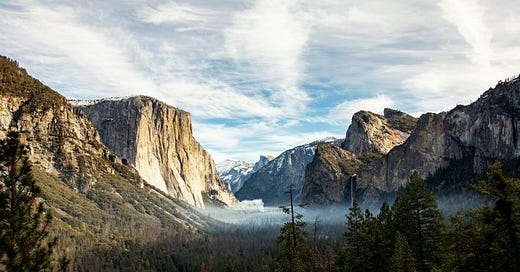



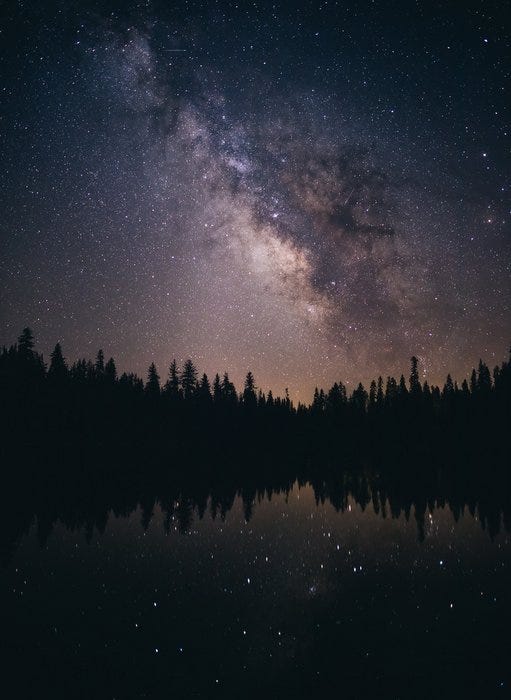
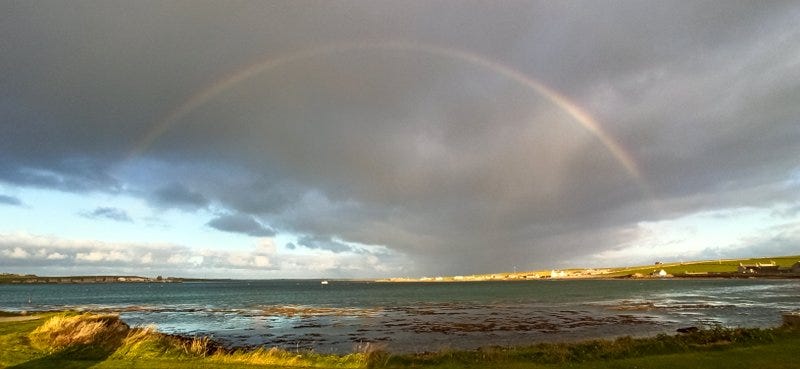

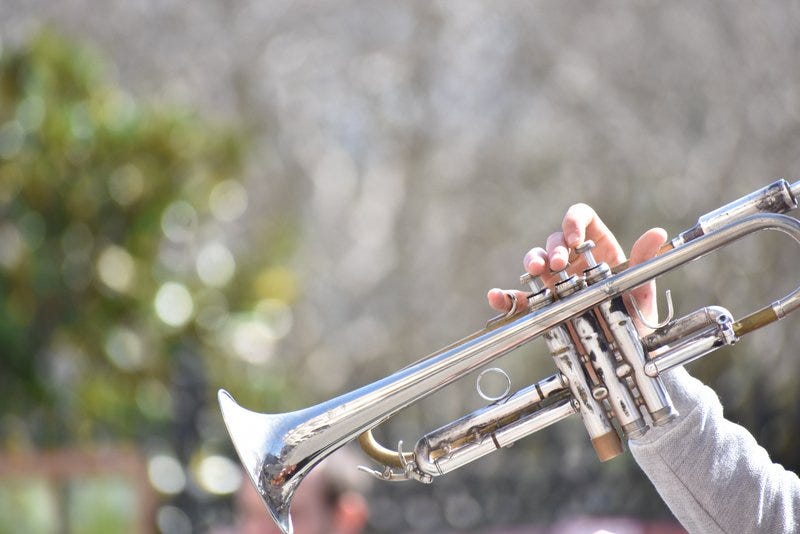
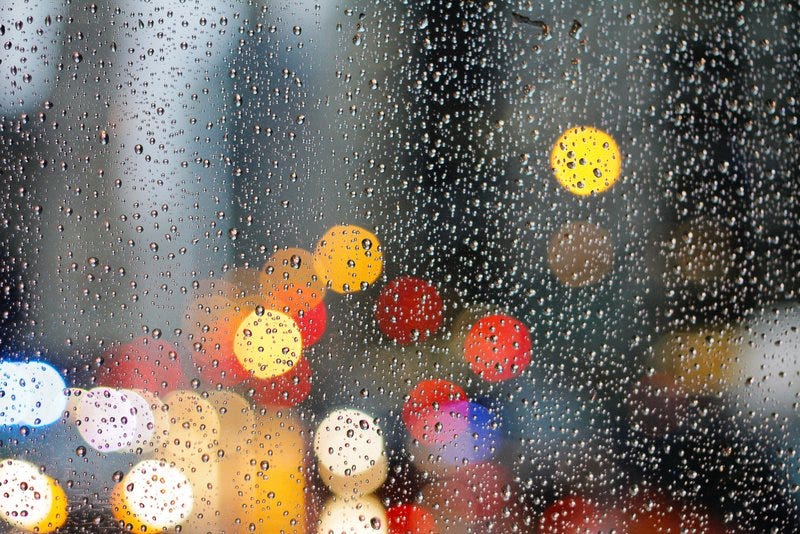
I find awe in the places that just aren't for people. Around the coast, there are often those little rock stacks that are home to hundreds or thousands of seabirds, but the sea around them is far too rough for a human to swim to them and climb up on. There's nowhere that a helicopter could land, and while, theoretically, you could lower someone down from a helicopter down on a rope, they'd then be trying to get a grip on unstable rock and bird poo, so even that's bordering on impossible. Yet there are plants and animals making them their home. I find that kind of thing fills me with awe.
I also love rain! Especially walking in the rain. One thing I'm perennially curious about (I wanted to write about this in my book on walking but couldn't think of a way to fit it in so didn't end up researching it) was if our skin has been de-evolving. I can't count the number of times people cancel walks with me because it's raining or windy or a tiny bit too cold or hot. My kids have become hardened, but many others seem to be very sensitive to the slightest skin discomfort, and I even wonder about myself. Anyway. Yay to more awe and amazing-ness!